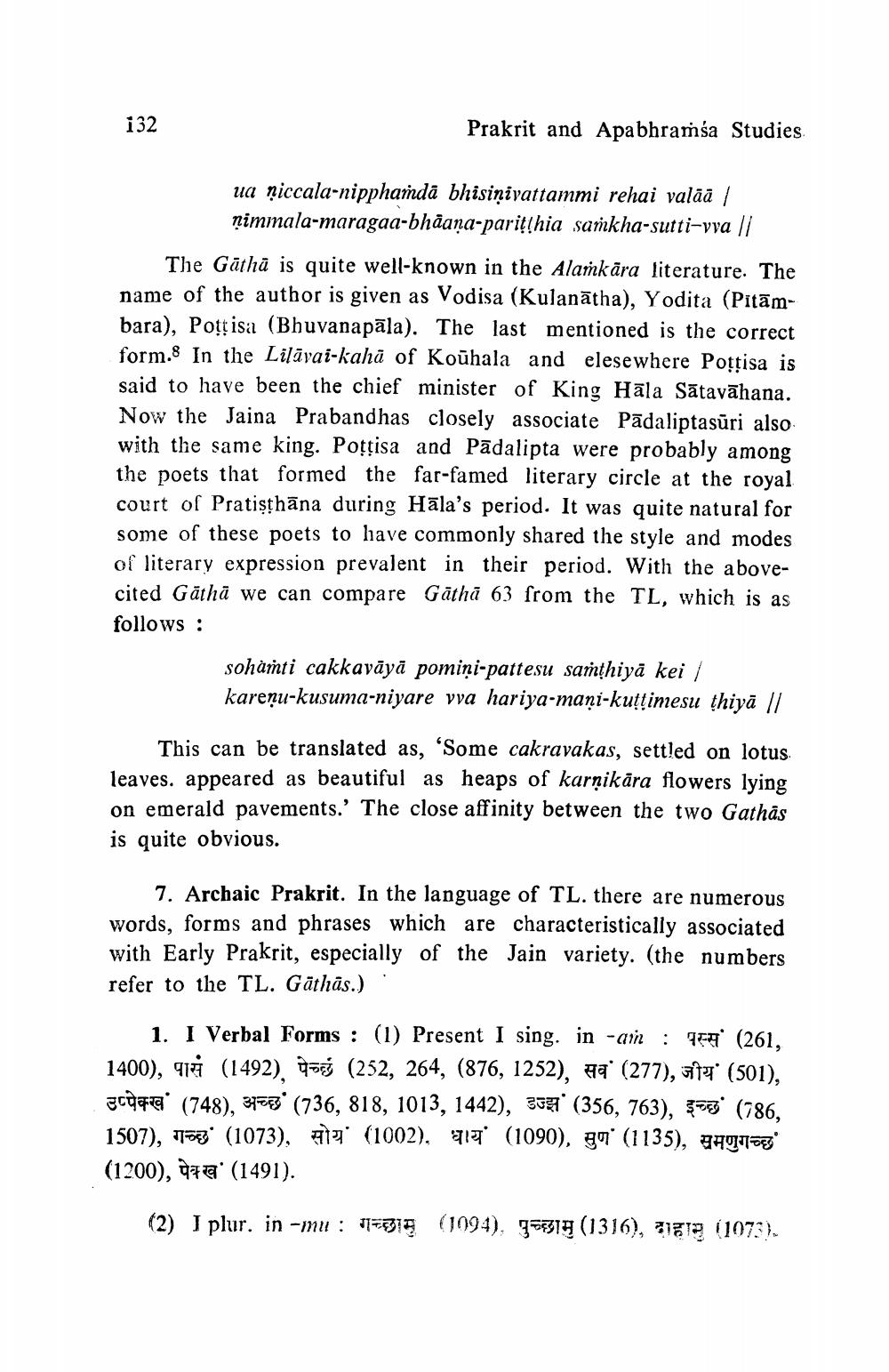________________
i32
Prakrit and Apabhramśa Studies
ua miccala-nipphamdā bhisiņivattammi rehai valāā / nimmala-maragaa-bhaana-parit!hia samkha-sutti-vya //
The Gathā is quite well-known in the Alamkāra literature. The name of the author is given as Vodisa (Kulanātha), Yodita (Pitāmbara), Potisa (Bhuvanapāla). The last mentioned is the correct form. In the Lilāvai-kahā of Koühala and elesewhere Pottisa is said to have been the chief minister of King Hāla Sātavāhana. Now the Jaina Prabandhas closely associate Pādaliptasūri also with the same king. Poțțisa and Padalipta were probably am the poets that formed the far-famed literary circle at the royal court of Pratișthāna during Hāla's period. It was quite natural for some of these poets to have commonly shared the style and modes of literary expression prevalent in their period. With the abovecited Gāthā we can compare Gāthā 63 from the TL, which is as follows:
sohàsti cakkavāyā pomiņi-pattesu samthiyā kei / karenu-kusuma-niyare vva hariya-mani-kuttimesu thiyā ||
This can be translated as, 'Some cakravakas, settled on lotus. leaves. appeared as beautiful as heaps of karņikära flowers lying on emerald pavements. The close affinity between the two Gathās is quite obvious.
7. Archaic Prakrit. In the language of TL. there are numerous words, forms and phrases which are characteristically associated with Early Prakrit, especially of the Jain variety. (the numbers refer to the TL. Gāthās.).
1. I Verbal Forms : (1) Present I sing. in -ami : 9E (261, 1400), 9 (1492). 973 (252, 264, (876, 1252), AT (277), 17 (501). score' (748), 34773 (736, 818, 1013, 1442), 354" (356, 763), şay (786, 1507), 1753' (1073), 1 (1002), 7 (1090), gn (1135), 949703 (1200), 972: (1491).
(2) I plur. in -mu: 75919
(1994), 25314 (1316), 21212 (1075).




